The worst keyboards of all time
Boards for sadists
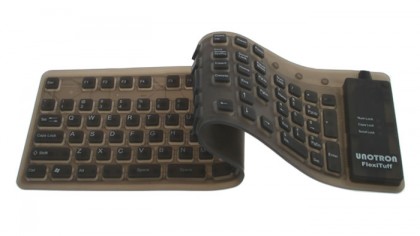
Introduction
Keyboards are one of those things that at a certain point someone got so right that everyone else more or less stopped messing with it.
It's like smartphone displays. Someone (and I'm not going to get into the argument of who exactly this was), came along and cracked the formula for how multi-touch displays should work, and almost everyone has followed the same design principals ever since.
When it comes to keyboards we might see a bit of variation when it comes to laptops trying to cram a few more buttons into the right-hand side, but otherwise nowadays their layouts are more or less standardised.
You have a standard layout of keys, a couple of function buttons here and there, and aside from arguments about whether rubber-dome or mechanical switches are better, everyone's on the same page about how they should work.
This wasn't always the case though. Before we settled upon today's standard layout, numerous companies tried their hand at establishing the industry standard. Some were successful, while others were far from perfect.
So read on for our list of the worst keyboards ever made, ranging from great computers with awful keys, to machines whose awful boards were completely in keeping with the quality of the computer itself (hello Mattel Aquarius).
We've even chucked a couple of more modern keyboards on this list in good measure, as proof that whatever happens there'll always be someone out there who wants to reinvent the wheel.
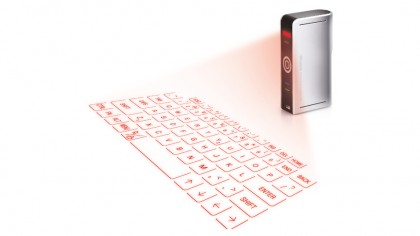
Celluon Epic Projection Keyboard
The Epic Projection Keyboard from Celluon is the most futuristic keyboard on this list, but it's a classic example of someone trying to fix what ain't broken.
On the surface the keyboard doesn't seem like the worst idea in the world, and it even looks pretty cool in the images released by Celluon.
Instead of offering physical keys that you type on, the device from Celluon instead projects a screen onto the surface in front of you, and then uses motion sensors to know when you've pressed a key.
Unfortunately from a functional perspective the keyboard isn't so great to type on. Typing on any keyboard requires you to be able to feel when you've pressed a key, even a phone will vibrate or blink to confirm a registered press.
The probem with tapping on a keyboard projection on your desk is that there's nothing to let your fingers know that you've successfully typed something.
The result is reportedly a frustrating typing experience, with some keys frequently being activated multiple times and others not activating at all.
We can see that the Celluon Epic Projection Keyboard might be a tempting proposition for you if you have massive space constraints, but in all honesty, your fingers deserve better.
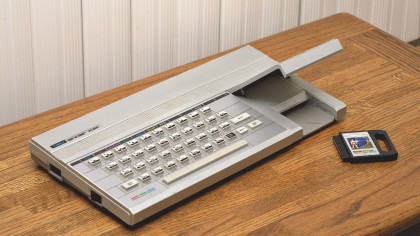
Timex Sinclair 2068
On the face of it the keyboard on the Timex Sinclair 2068 doesn't seem entirely awful.
It's got a fullsize spacebar, the keys are in a more or less standard QWERTY layout and the keycaps are made of standard plastic, rather than the awful rubber found on some of the other keyboards of that era.
But don't let those surface features deceive you, the Timex Sinclair 2068 was a nightmare to type on. This was because of the sheer amount of functions each key was capable of, which made doing anything other than basic word processing a chore.
The keyboard's most egregious sin however was omitting the inclusion of a backspace key entirely. I hope you like your mistakes, because they're going to be staying with you for an awfully long time.
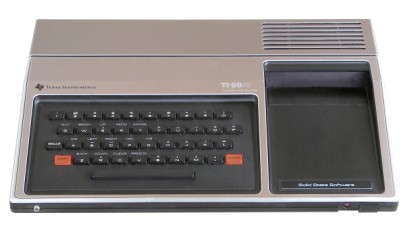
Texas Instruments TI-99/4
Like the Timex Sinclair 2068, the Texas Instruments TI-99/4 also lacks a backspace key, but that's by no means this keyboard's biggest problem.
No, the TI-99/4 also opted to put almost every useful key exactly where you wouldn't expect it to be. The enter key was located where the right shift should be and the space key was weirdly out of the way.
Then, because of the decision to use the shift key as a modifier, pressing shift-Q would quit the current document rather than simply give you an uppercase letter 'Q'.
If the problem with the Timex Sinclair 2068 was that it was too difficult to erase your mistakes, then the Texax Instruments TI-99 has the opposite problem; it made it too difficult for you to lose your best work.
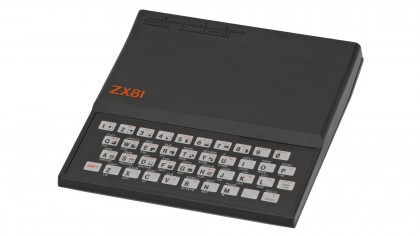
Sinclair ZX81
Sinclair is best known for the ZX Spectrum, which is widely regarded as a classic early British personal computer.
But just a year earlier the company released this clunker of a system, which was entirely designed with its budget price point in mind.
On that latter point it was remarkably successful, and was the first personal computer to retail for under $100.
But unfortunately reaching this price point required Sinclair to make some rather uncomfortable compromises, in particular when it came to its keyboard.
You know the kinds of keyboards they use on the tills of fast food resteraunts? Those flexible plastic services that people only put up with because they're easy to clean at the end of the day?
Well the ZX81 was rocking one of those bad boys, and Sinclair actually expected people to program on the damn thing.
As a result many who bought the computer ended up running custom software that allowed them to use an external keyboard.

Rubber roll-up keyboards (all of them)
Another modern one now, and like projection keyboards, these roll-up boards suffer from the same attempt (and subsequent failure) to reinvent the wheel.
To a certain extent I can see where the various manufacturers are coming from. It absolutely sucks to carry around a keyboard, even a compact 60% model, and I can see how attempting to make a more flexible model would seem to make sense.
But unfortunately, as anyone who's used one of these boards will tell you, the result is a board that might be more portable, but is almost unusable when you actually want to type on it.
They feel mushy, they're unresponsive, and nine times out of ten you'd be better off using your device's built-in keyboard, and yes, that includes touchscreens.
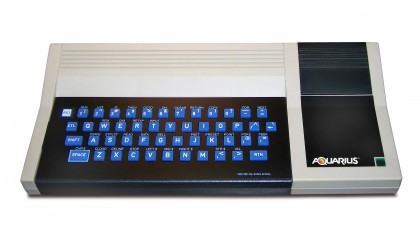
Mattel Aquarius
Ok now we're well and truly moving into the realms of the truly awful.
This is the Mattel Aquarius, a personal computer released by a company best known for being the home of Barbie.
Let's get the obvious out of the way, the Aquarius's space bar isn't where it should be, in fact it's nowhere close.
Whereas almost every keyboard has correctly identified the space bar as a key that needs to be placed front and centre, for whatever reason the Aquarius decided to place the key where you'd normally expect to find the left shift key, and yes it's just as bad a decision as it sounds.
Thankfully consumers were quick to notice what an abjectly terrible idea this was, it sold terribly, and it survived just four months in production before being killed off.
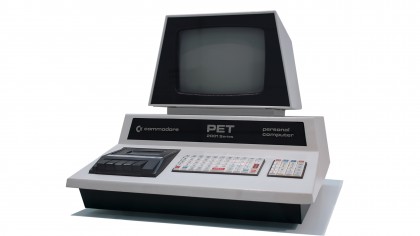
Commodore PET 2001
Like Sinclair, Commodore is a giant of the early computing era, and is perhaps most famous for the Commodore 64 which was to the US what the Sinclair ZX Spctrum was to the UK.
You might think that given Commodore's obvious massive contribution to the computing industry, as well as the fact that the ZET 2001 was literally the first personal computer ever made available to retail consumers, I might be willing to cut the company a little slack.
But regardless of what an impact the company may have gone on to make, the keyboard on the PET 2001 is genuinely terrible, and the starkest example yet of the progress we've made since 1977.
The keyboard shares many of the sins we've seen elsewhere on this list. The 'keys' are just a flexible plastic surface and the space key is absolutely tiny (although to their credit Commodore at least had the foresight to place it centrally, unlike Mattel above).
But the weirdest thing about the PET 2001's keyboard (at least to modern eyes) is the fact that the keys are all vertically alligned, which massively increased the liklihood of hitting a key in the wrong row.
So while it might have been a milestone in the progress of the personal computer, we're nevertheless very thankful for the fact that there have been many more milestones since.
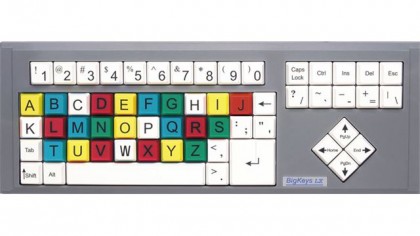
BigKeys LX Keyboard
Our final of the awful keyboards from modern manufacturers that should known better is the BigKeys LX.
Whereas a lot of the keyboards on this list need to have to have their crimes against keyboards described in words, the BigKeys LX almost speaks for itself.
I mean just look at this thing. The massive keys make it look like something you'd give to a child to hear what sound a cow makes (for reference: 'Moo'), and don't even get me started on the right hand side's flagrant disregard for the last fourty years of keyboard design.
BigKeys advertises that their keyboards are meant for people who have trouble operating a normal keyboard, but there's a way to achieve this noble aim without making a keyboard that simply doesn't work (link to imgur review).
Randomly repeating keys, an 'f' key that activates not when you press the switch but when you release it, and a generally poor build quality means that the BigKeys LX's place in this list is well deserved.
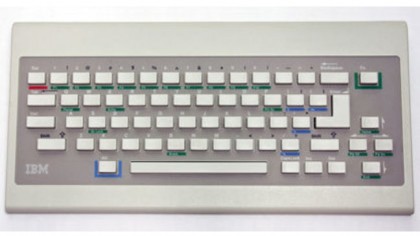
IBM PCjr
Amongst keyboard enthusiasts, the IBM Model M is considered to be one of the best keyboards ever made. It's solid, built like a tank in fact, and as a result lasts for years.
It's a keyboard that I own personally. I wrote most of my university essays on the old thing, which a small sticker on its underside tells me was manufactured in 1989 in 'West Germany'.
Yes ladies and gentlemen, a keyboard produced prior to the fall of the Berlin wall is currently sitting in my room in perfect working order.
Given IBM's keyboard history, it might surprise you to know that it's also responsible for one of the worst ever made on its first home computer, the IBM PCjr.
The keyboard on the PCjr was certainly ambitious. It was one of the world's first wireless keyboards, but unfortunately for IBM battery technology simply wasn't at the point of being able to support a keyboard for any period of time.
As a result the PCjr's keyboard absolutely ate through batteries, and the problem was so great that it contributed to the computer's failure in the market. It was so bad that even IBM salesmen are reported to have recommended that people purchase replacement keyboards for their PCjrs.
A more minor problem was the keyboard key legends, which were printed on the keyboard's base rather than the keys themselves in order to save money.
Ultimately these problems, alongside an exhorbitant price tag, contributed towards what Time magazine called "one of the biggest flops in the history of computing."
Thank god IBM went on to make the Model M, or else it would have forever been remembered as the company that produced the worst keyboard ever made.

Jon Porter is the ex-Home Technology Writer for TechRadar. He has also previously written for Practical Photoshop, Trusted Reviews, Inside Higher Ed, Al Bawaba, Gizmodo UK, Genetic Literacy Project, Via Satellite, Real Homes and Plant Services Magazine, and you can now find him writing for The Verge.